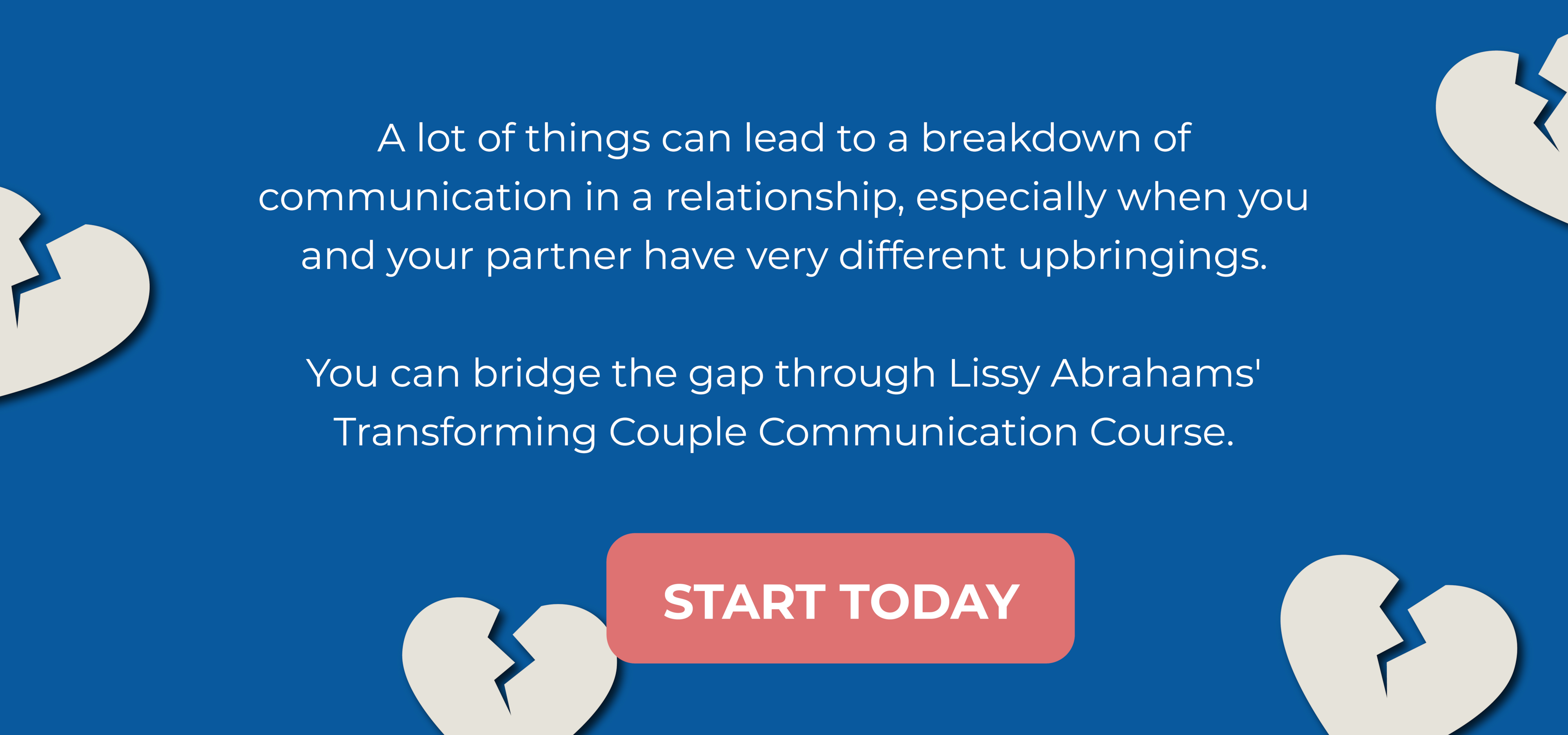Why Tone of Voice in Communication Is Important in Relationships

Couple Gene and Annabelle were discussing their weekend plans. Annabelle suggested a quiet evening at home, but Gene, who had a stressful week, replied sharply, "That sounds boring!" His voice was laced with irritation. And this is why tone of voice in communication is extremely important.
Gene had no idea that his tone of voice would convey emotions of the level it did, and Annabelle was caught off guard by his intensity. She instantly felt her idea was rejected and her efforts to plan something enjoyable together dismissed.
Tone of voice can drastically shape the meaning and impact of our words in communication and holds significant power in how our messages are perceived and understood. It can mean the difference between fostering empathetic communication or leaving the other person feeling disregarded and misunderstood, like Annabelle did.
Unveiling the Subtleties of Tone: Mastering Communication for Relationship Success
The point of communicating is so much more than the words you use or the language you speak. It's more than how you listen, hear, or focus. These are all important. But what's critical is how tone of voice in communication reveals intentions and emotions even without our awareness and can impact the couple dynamics.
Together, we'll delve into and reveal the role tone of voice in communication has on our interpersonal interactions so you can develop your awareness of how your voice can affect a relationship for better or worse.
Understanding the Nuances of Tone of Voice in Communication
In today's world, effective communication plays a role is at the heart of our ability to build relationships — and tone is a crucial aspect of this.

When I talk about tone of voice, I refer to the quality, character, or attitude that is conveyed. Tone can reveal a range of emotions, can leave a positive lasting impression, and in different situations it can lead to a point of departure in a relationship.
The Power of Tone: Enhancing Communication in Relationships
In a couple relationship, the tone of voice plays a pivotal role in effective communication. A soft tone can convey empathy and understanding, fostering a sense of closeness and trust between partners. Conversely, a sarcastic tone can cause hurt and misunderstanding, creating distance.
Being aware of your own tone and how it might be perceived is crucial in maintaining a harmonious relationship. For instance, speaking slowly, with a steady and even pace may be reassuring, conveying a sense of calm and control or it may appear condescending and patronizing conveying "you're stupid." It's important to be able to discern the difference because the tone of voice can reveal the real intent, causing emotions to calm or run high.
Mastering Tone for Healthier Relationships
The tone in verbal communication deeply influences the conveyed message and emotions. A friendly tone can encourage positive dialogue, making the listener feel valued and more open to speak with you. Conversely, harsh or impatient tones might unintentionally express negative emotion and cause conflicts.
Being mindful of your voice and its different tones is vital for a healthy partnership.
Understanding the Impact of Tone of Voice in Communication
Tone plays a crucial role in communication, influencing perception beyond just using the right words. It encompasses voice characteristics like volume, pitch, and pace, crucial for conveying emotions. Dr. Albert Mehrabian's research highlights that only 7% of our message is conveyed through words, while 38% is through tone and 55% through body language. When words and tone contradict, the tone is often trusted more.
In relationships, tone is pivotal as it shapes the meaning, sound, and perceptions of our words. Recognizing and adapting tone of voice helps partners feel good and develop greater connection.
The Different Kinds of Tone

There are many forms of tone, and they can influence the quality of interactions between partners. For every one mentioned below, don't forget there's an opposite tone too. Check these out:
- Understanding: Conveys empathy and attentiveness
- Supportive: Reflects encouragement and care
- Playful: Adds lightness and humor
- Serious: Indicates the importance of the conversation
- Calm: Helps in de-escalating conflicts and reducing overwhelm
- Affectionate: Communicates love and appreciation
- Empathetic: Demonstrates understanding and shared feelings
- Sincere: Essential for conveying honesty and genuineness
- Respectful: Demonstrates consideration and esteem
- Open: Invites honest and transparent communication
- Confident: Conveys certainty and assurance
- Inquisitive: Shows genuine interest and curiosity
- Apologetic: Important for acknowledging mistakes and showing remorse
- Encouraging: Motivates and uplifts
- Dismissive: A warning sign of minimizing or ignoring the partner's feelings or opinions
- Irritated: Indicates annoyance or impatience
- Frustrated: Signals dissatisfaction or upset
When a partner uses the right tone of voice for their loved one, then we can say there is an emotional match and effective communication tone between them.

In business communication, both spoken and written communication are pivotal. The tone of voice used in speaking, as well as the tone implied in writing plays a critical role. Effectively conveying the right tone and message through voice, speaking style, and language choice is essential for engaging colleagues, addressing the target audience, and representing a company's tone in various formats, from public speaking to blog posts.
This key aspect of communication, though beyond the scope of this article, is vital in both professional contexts. Be aware, your tone of voice in communication and being able to use different tones depending on what you are communicating is a skill that will build trust, so you are heard by your audience.
Unveiling the Impact: Practical Applications of Tone in Communication
Resolving Miscommunication Between Couple Emma and Ryan

Emma and Ryan faced a misunderstanding during a weekend getaway. Emma's excitement about a hiking trip was misinterpreted by Ryan due to her tone, which he perceived as sarcastic. Realizing the issue, Emma revisited the conversation with a different, more sincere tone, actively listening to Ryan’s concerns and showing empathy.
Key Steps in Resolving the Miscommunication:
- Awareness: Emma recognized how her tone affected Ryan.
- Control: She consciously adjusted her voice tone, focusing on a positive and clear pitch.
- Active Listening: Both partners listened to each other's viewpoints.
- Empathy: Demonstrated through their speech and attentive listening.
- Positive Communication: They shifted to a positive tone, facilitating effective dialogue.
Emma and Ryan learned the crucial role of tone of voice in communication. Emma's ability to use a positive tone and convey the right emotions through her voice played a key role in resolving their misunderstanding. She was aware of the need to speak in a manner that conveyed her true intention, selecting the right pitch and tone to communicate her message effectively.
This situation serves as an example of how the sound and nuances of one's voice can impact the meaning and emotion in a conversation. By focusing on developing this aspect of communication, they could control the context of their discussions, leading to a better understanding and a stronger connection.
Developing Self Awareness of Tone
Developing self-awareness of your tone in communication involves practices like:
-
recording conversations or speaking in front of a mirror
-
actively listening to gauge others' reactions
-
choosing a tone that aligns with your message
-
being flexible
-
show empathy
-
seek feedback
-
continuously improve (through exercises, speaking classes, workshops, therapy)
Resources to Deepen Your Understanding of Tone of Voice in Communication
Here are some books for deepening your understanding of tone and its impact on communication:
1. "The Human Voice: How This Extraordinary Instrument Reveals Essential Clues About Who We Are" by Anne Karpf - This book offers an in-depth exploration of the human voice, delving into how our voice and tone reveal our identity, emotions, and intentions.
2. "It's the Way You Say It: Becoming Articulate, Well-spoken, and Clear" by Dr. Carol Fleming - Fleming's book is a comprehensive guide on improving vocal communication. It provides insights and techniques for using your voice effectively to convey your message and emotions.
3. "Voice and the Actor" by Cicely Berry - While focused on actors, this book offers valuable insights applicable to anyone interested in understanding and improving their vocal tone. Berry, a renowned voice coach, shares techniques for developing vocal range and expressiveness.
Frequently Asked Questions about Tone in Communication
What are the four main types of tone in communication?
Friendly Tone
Formal Tone
Persuasive Tone
Informative Tone
What are the four elements of tone?
Pitch
Refers to the highness or lowness of your voice during communication.
Volume
Describes how loud or soft your voice is.
Rate
Indicates the speed at which you speak.
Quality
This pertains to the qualities or texture of one's voice, such as being rough, high pitched, or breathy.
Final Reflections on Harnessing the Power of Tone in Communication
By implementing the steps provided here, you can embark on a journey towards self-awareness, adaptability, and empathy in how you utilize tone.
Are you interested in discovering secrets of communication and transforming your relationships? Explore my programs specifically designed to offer an experience into communication techniques, relationship building strategies and much more.
With the knowledge you have gained from this article, now is the perfect time to take a significant step towards improving your communication skills. Read more about my Transforming Couple Communication course.
Your journey towards fulfilling and healthier relationships is one click away. Start today for a happy future!




